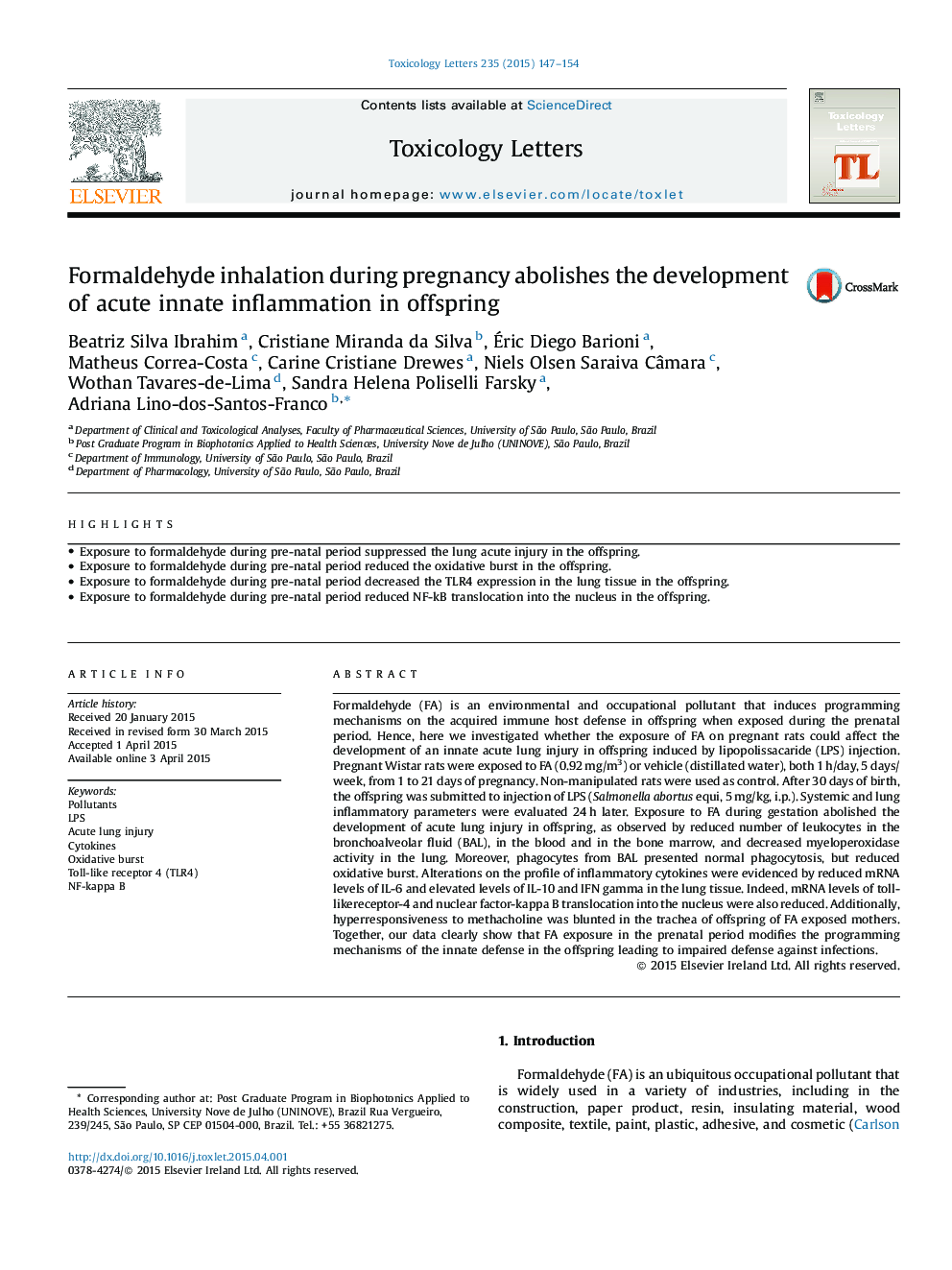| Article ID | Journal | Published Year | Pages | File Type |
|---|---|---|---|---|
| 5859954 | Toxicology Letters | 2015 | 8 Pages |
Abstract
Formaldehyde (FA) is an environmental and occupational pollutant that induces programming mechanisms on the acquired immune host defense in offspring when exposed during the prenatal period. Hence, here we investigated whether the exposure of FA on pregnant rats could affect the development of an innate acute lung injury in offspring induced by lipopolissacaride (LPS) injection. Pregnant Wistar rats were exposed to FA (0.92Â mg/m3) or vehicle (distillated water), both 1Â h/day, 5 days/week, from 1 to 21 days of pregnancy. Non-manipulated rats were used as control. After 30 days of birth, the offspring was submitted to injection of LPS (Salmonella abortus equi, 5Â mg/kg, i.p.). Systemic and lung inflammatory parameters were evaluated 24Â h later. Exposure to FA during gestation abolished the development of acute lung injury in offspring, as observed by reduced number of leukocytes in the bronchoalveolar fluid (BAL), in the blood and in the bone marrow, and decreased myeloperoxidase activity in the lung. Moreover, phagocytes from BAL presented normal phagocytosis, but reduced oxidative burst. Alterations on the profile of inflammatory cytokines were evidenced by reduced mRNA levels of IL-6 and elevated levels of IL-10 and IFN gamma in the lung tissue. Indeed, mRNA levels of toll-likereceptor-4 and nuclear factor-kappa B translocation into the nucleus were also reduced. Additionally, hyperresponsiveness to methacholine was blunted in the trachea of offspring of FA exposed mothers. Together, our data clearly show that FA exposure in the prenatal period modifies the programming mechanisms of the innate defense in the offspring leading to impaired defense against infections.
Keywords
Related Topics
Life Sciences
Environmental Science
Health, Toxicology and Mutagenesis
Authors
Beatriz Silva Ibrahim, Cristiane Miranda da Silva, Ãric Diego Barioni, Matheus Correa-Costa, Carine Cristiane Drewes, Niels Olsen Saraiva Câmara, Wothan Tavares-de-Lima, Sandra Helena Poliselli Farsky, Adriana Lino-dos-Santos-Franco,
